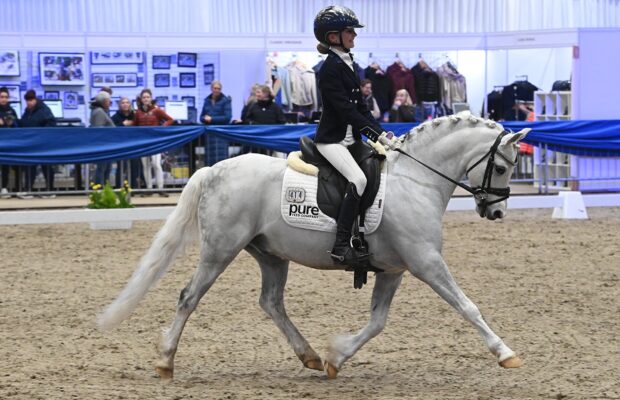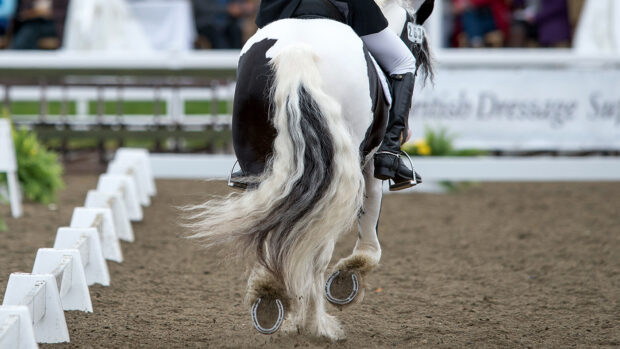*NB: the latest recommendation from the British Equestrian Federation is that “people don’t ride their horses unless strictly necessary”, but we hope this article will be prove useful to readers when the current coronavirus restrictions are lifted*
British dressage team stalwart Laura Tomlinson MBE was a member of the gold medal-winning team at the London Olympics in 2012, where she also won an individual bronze medal with her long-term partner Mistral Højris.
Training the stars
Andretti H (pictured) was tricky in the contact. He could be a bit light in the hand and I had to have him in front of the leg and pulling into the bit before he could have true self-carriage. Mistral Højris was good in the contact. I could ride him off my seat and leg, and balance him without having to hold on. I could really show the give in the rein; that he was in his own balance.
Tackling the issue
Self-carriage is an issue at all levels of the sport. It’s one of the basic principles of correct dressage, but few horses, even at the top level, get it totally right.
A horse is in perfect self-carriage when he is forward and off the leg, light in the contact and not relying on the rider to hold himself.
1. Ensure your horse is on the aids — ask yourself, is he in front of your leg and listening to your seat when you want him to come back? The horse must be in front of the rider’s leg, so when you put your leg on, you want an instant reaction. Similarly, when you want the horse to collect, you should use a half-halt, and not a big pull, and expect the horse to come back. The rhythm of the pace should stay active. To achieve self-carriage in the horse, the rider must also be in self-balance and not relying on the horse’s mouth.
2. Work on transitions from one pace to another and transitions within the pace with more advanced horses. Performing transitions allows you to do half-halts and make sure your horse is responsive to your leg aids. That’s how you create impulsion. Remember to keep your shoulders, hips and heels in one line when riding transitions. If the rider is in balance, they are less likely to use their hands to balance, which will help the horse to be in balance, too.
3. Canter on a 20m circle and every time you cross the centre line on each side, collect and then ride forwards again. It’s about being really strict with yourself that you collect and give with the reins and the horse remains in collection but stays in front of the leg.
4. Self-carriage means the horse is not behind the bit and not towing you — he’s carrying himself. The work becomes light and easy rather than the rider doing everything for the horse.
Article continues below…
You might also be interested in:

#SundaySchool: How do I maintain impulsion in downward transitions?
Dressage rider Alice Oppenheimer explains how to keep a horse energetic and forward, even when slowing down

#SundaySchool: ultimate suppleness and engagement with a top dressage rider
Sarah Millis (pictured), an international dressage rider, explains how you can improve the quality and rhythm of the trot by

Subscribe to Horse & Hound magazine today – and enjoy unlimited website access all year round
Consider this…
- Ensure your horse is comfortable and happy in his mouth and that the bit you are using is suitable for him. A horse won’t work in self-carriage if he isn’t happy in his mouth.
- Self-carriage and connection go hand-in-hand, so if you are still having issues, get his teeth, back and saddle checked to rule out any pain issues.
Would you like to read Horse & Hound’s independent journalism without any adverts? Join Horse & Hound Plus today and you can read all articles on HorseandHound.co.uk completely ad-free.




